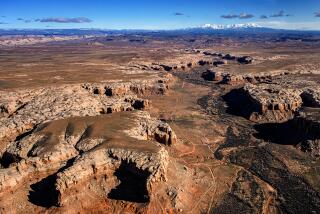How Little Skirmishes Became the West’s New Range War
- Share via
Nothing is simple about mineral rights in Wyoming.
While some ranchers own the rights to the treasure beneath their feet, in most cases they do not. The Stock Raising Homestead Act of 1916 granted land to ranchers, but in most cases kept the mineral rights in federal hands. In other cases, those rights are owned by the state, or even other private owners. Those situations are called split estates, and things get especially complicated when the landowner and the owner of the mineral rights can’t come to terms.
That was the case for Mary and Buck Brannaman. Buck trains horses near Sheridan, Wyo., and was the model for the trainer in the book “The Horse Whisperer.” The Brannamans didn’t fully understand the consequences of the split-estate concept until the earth-moving equipment was practically at their gate. Mary shows off photos of her ranch before and after drilling for methane. New roads have been ripped into the prairie, earth scraped, trenches dug and pipes laid. “They just drop the blade and go,” she says.
It was a supreme feeling of powerlessness, she says, to watch as the gate swung open to allow the drilling rigs and bulldozers in. They assumed it would not be bad because the company had agreed to do it right. But the promises turned out to be hollow, she says, and they had to hire a lawyer to force the company to clean up its mess. “I never knew people could do what they could do--take the land and tear it apart,” Mary says. “The lawyer said we couldn’t lock the gate. But we should have locked the gate. They don’t play by the rules. Why should we?”--J.R.
More to Read
Sign up for Essential California
The most important California stories and recommendations in your inbox every morning.
You may occasionally receive promotional content from the Los Angeles Times.










